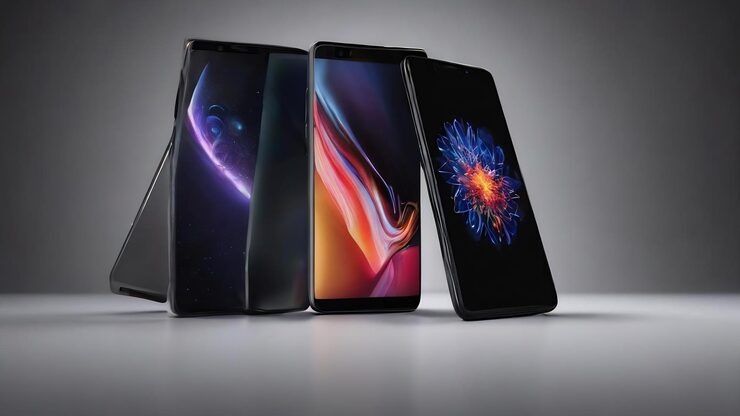A Guide to Android Phones: Basics, Knowledge, and Explanation
Android handsets are the most popular smartphones in the world. Android, a software operating system that Google developed and introduced 2008, functions as an open-source platform for device makers to use when building smartphones. Unlike closed systems, Android handsets give companies like Samsung, OnePlus, Xiaomi and Moto the freedom to modify features to tailor them to their phones.
The advent of Android phones has changed the way we communicate, work and live. With price points and models for everyone, Android devices are the epicenter of the mobile tech ecosystem and provide a lifeline to billions globally.
Why Android phones matter today
Phones aren’t just communicators anymore. They are mini-computers that link people to banking, education, health monitoring, entertainment and work. Android phones in particular make it easy because:
-
They’re available for all types of budgets, from budget to luxurious.
-
It offers a rich app store via Google Play.
-
We’re talking of course about android phones with all the customization they bring.
-
New security and cloud integration enhancements enable improved data protection and productivity.
For a lot of folks, an Android phone is the first and often only computer they have. They provide a bridge across developing-world technology gaps, enabling access to educational resources, telemedicine and government services.
Recent developments and trends in Android phones
There have been a few major developments for the Android world during the past year:
-
Android 14 release (October 2023): Added enhanced privacy settings, further power management improvements and greater accessibility options.
-
Foldable phones boom (2023–2024): Samsung and Oppo among others widened the foldable market as their designs became tougher and more common.
-
AI integration: Devices now come with on-device artificial intelligence for photography, translation and predictive text.
-
Security patches: It’s become common for top manufacturers to issue monthly patches addressing cybersecurity threats.
-
5G proliferation: Affordable Android models released with 5G connectivity, bringing high-speed connections to the masses.
These numbers are indicative of the way Android has kept up with changing consumer needs and worldwide technology shifts.
Android-device-level policies and restrictions
Laws and rules matter, because Android phones are constrained by data use, privacy and global markets alike. A few examples include:
-
Data privacy regulations: The General Data Protection Regulation (GDPR) on handling user data is mandatory for all Android devices sold in Europe from manufacturers that want to include Google’s software.
-
India (ruling in 2023): The Indian Competition Commission fined Google and ordered changes to the way Android licenses apps, targeting pre-installed software.
-
USA: The FCC regulats wireless standards, which also makes sure Android phones comply with safety regulations.
-
China: Because of policies around app stores and digital services, many Android devices in China are running customized versions without Google Play.
These rules are designed to dictate how Android phones work in different parts of the world, and keep people safe from harm — whether that’s from unlawful competition, or a dodgy app.
Top useful tools and resources for Android users
There are many different tools and apps that can help you get the maximum out of Android devices. Some of the discounts are programmed into the system, while others come from established groups.
| Tool/Resource | Purpose |
|---|---|
| Google Play Protect | Scans apps on the device to detect harmful behavior |
| Digital Wellbeing App | Monitor screen time and reduce interruptions |
| Files by Google | Clean up space on your phone.SimpleDateFormat.DateFormat Simple Date Format. |
| Android Device Manager | Find lost or stolen phones |
| GSMArena | Compares detailed data on Android devices |
| AccuBattery | Tracks battery health and charge cycles |
These resources enhance performance, safeguard your digital self and support informed decisions about the devices and apps you use.
Frequently asked questions
How is Android different from other phone systems?
Android is open source and customizable, so more than one manufacturer can use it. Then you have a range of hardware, price and features that so far doesn’t exist in a closed system like iOS.
Are there regular Android phone updates?
Yes. Google issues an annual version of Android and monthly security updates. But when updates come can depend on who made the phone.
Are Android phones secure?
Contemporary Android phones come with biometric authentications, encryption and Play Protect. It is also contingent on user behavior, such as not downloading unverified apps.
Can older Android phones still be used safely or do they need to be retired by year’s end?
Older phones might work, but phones that no longer have updates may become vulnerable to new security threats. It is advisable to update for safe in the future.
Which Android brand is best?
Best brand is no best brand. Samsung, OnePlus, Xiaomi and Google’s Pixel all meet different needs, from camera quality to gaming to value for money.
Conclusion
Android phones have changed how we work, connect and learn. Their versatility makes them invaluable in many parts of the world, for everyone from city workers to rural students. Recent advancements, such as foldable devices, AI-based tricks and tighter privacy rules, demonstrate how Android has continued to evolve.
Newcomers and seasoned Android users alike can benefit from learning the basics of Android, keeping up with its ever-changing policies, and using the best tools to get more for their devices. So long as new innovations become possible, Android devices will sit at the heart of global digital life.
